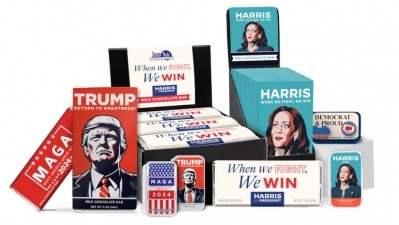Freeze-dried sweets boosted by TikTok as new confectionery craze

At this year’s Sweets & Snacks Expo, the National Confectioners Association (NCA) named freeze-dried sweets one of the must-watch trends for the year.
Fuelled by social media buzz, particularly on TikTok, consumers are experimenting with new ways to create freeze-dried candy at home. Videos featuring tutorials and experiments –such as US celebrity Chef Nick Digiovanni’s content, which has garnered 1.2 million likes – are part of the craze. As of August 2024, there were 122 million TikTok posts on freeze-dried sweets.
Freeze-drying, or lyophilisation, removes moisture from candy through sublimation, a process where ice turns directly into gas, bypassing the liquid stage. This method preserves the candy’s flavour while extending its shelf life. Some enthusiasts even use dry ice at home to freeze-dry their favourite sweets.
Multisensory, innovative, engaging
“Freeze-dried candies have made a big entrance into the industry,” says Tessa Porter, a confectionery scientist at Sprinkk. With its rise on social media, established brands are also embracing the trend. Vimto, for instance, launched freeze-dried sweet Vimto Fried Eggs, while Maoam introduced its Bloxx chews in various fruity flavours. Meanwhile, Sow Good is creating its own freeze-dried treats from scratch.
Sow Good, which raised $1 million in 2023 and plans to generate a further $15 million, is pioneering this trend with 18 SKUs across two product lines. Building their freeze-drying machines from scratch and prioritising vertical integration, Sow Good’s machines achieve 300 microns of vacuum pressure, compared to competitors’ 2,000 microns.
“A sizable difference that in essence allows us to create the hyper crunchy and hyper-flavorful products we have become known for,” says CEO Claudia Goldfarb.
“We also don’t cheat during the process,” Goldfarb adds. Sow Good freeze-dries its candies for 17-24 hours, removing 97-99% of moisture for an optimal snacking experience. “Because freeze-drying is the most expensive and longest part of the process, many other companies will only freeze-dry the product for 7-10 hours, which leads to gummy, subpar insides and poor-quality issues,” Goldfarb continues.
Producing these sweets can be time-intensive and costly. Sow Good’s approach reflects a commitment to quality, positioning its freeze-dried products as a premium offering.
A trend rooted in function
Originally designed for military and emergency services, freeze-drying has become mainstream, thanks to its application in space food and hiking supplies. Today, brands see it as a chance to add novelty and fun to confectionery.
In 2024, shoppers are looking for multisensory experiences, and freeze-dried candies deliver on this with unique textures and intense flavours. “Freeze-drying candies creates a textural experience in a market that is always looking for new textures,” Porter says.
Freeze-drying can enhance a candy’s crunch and concentrate its flavour. Chewy sweets can transform into crispy, brittle treats, offering a new way to enjoy classic confections.
How freeze-drying works
Porter explains that freeze-drying involves removing moisture through vacuum and temperature control, causing the candy to expand and become brittle. This complex process, combined with the need for precision equipment, makes freeze-dried sweets more suitable for the premium category.
Emerging brands in the freeze-dried space
Freeze-dried versions of consumer favourites like Wham Original Chew Bar and Fruit Salad are now available from specialist stores and online retailers like US-based CandyJan and the UK’s SoSweet. China’s Amos Sweets, traditionally known for its gummies, has also jumped into the freeze-dried segment with new product launches.
Astro Freeze Bites, a Michigan-based retailer, opened its first store in August 2024, specialising in freeze-dried candies, with 62 varieties on offer. The brand’s website claims it has “perfected the process to ensure every product meets the highest standards of taste and texture.”
Freeze-dried fakery?
Goldfarb believes many new companies in the freeze-dried candy space lack the expertise to produce high-quality products. “These companies hopped aboard the freeze-dried candy bandwagon as it went viral but have little to no freeze-drying knowledge,” she says.
Looking ahead, Goldfarb predicts that freeze-dried candy will become more than just a TikTok trend, with larger brands likely to jump on board. “I believe the industry will continue in this direction, with some big names in candy getting involved as well,” she adds.













